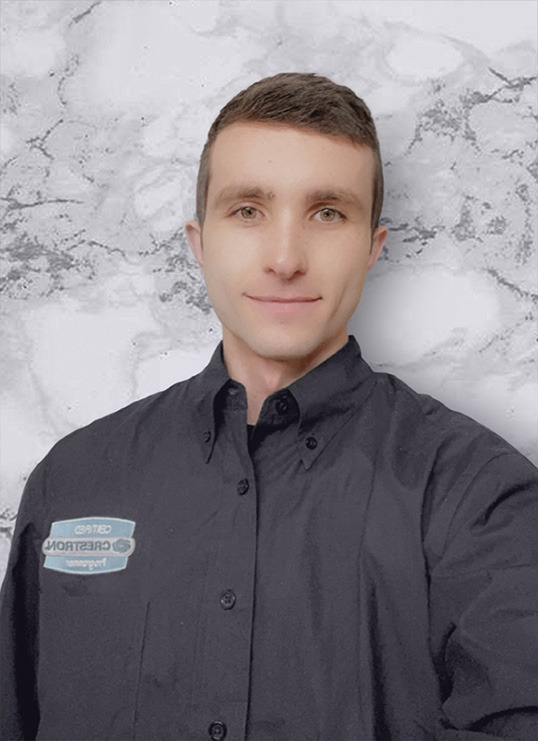AV Insider Spotlight : Marc Scheibein, Tech Support & Training, AMX Germany
Each week, I am highlighting on some of the incredible people who are in the Audio Video Industry. As this blog is mostly about AV insiders, today we are profiling Marc Scheibein .
Here is a brief intro about him.

Marc Scheibein has worked in the Audiovisual industry for over 20 years. As a part of his job in AMX GmbH, he conducts regular trainings and support for the dealers.
Please drop your questions in the comments below and i will make sure that he sees them.
1.Describe your journey in the AV industry? How did it start?
After finishing my education to an Electronic Technician, Information Technology, I started in late 1993 at a small company that does AV installation, rental, show and event. In 1995, one day my boss came into the workshop and asked, if someone does know about programming. So I said yes (good old 8bit BASIC), and so got in contact with the AMX products, and got my training course at the German AMX distributor. For the ones who know the history: this was the time of the AXcessX DOS compiler, and TPDesign1… In mid 1998, by luck I heard that the German AMX distributor was searching for an additional support team member, I got the job and started there at February 1998. In this era I got, amongst others, hands on the first AXcent3 and AXT-CA10 in Germany (1998), and the very first NetLinx NXI-ME integrated Controller ever showed in public (2000). When AMX started its own office in early 2008, I changed to the AMX GmbH, and I’m still working there up to today. This makes more than 20 years of AMX experience, and 18 years of working directly with and for AMX.
So I’m not an integrator or consultant, I’m one of 5 technical support team members at AMX Germany, supporting Germany and Austria, and sometimes also worldwide. This includes the daily customer technical support by phone and email, customer trainings (programming, installation), and also field service.
2.What do you think is the challenges that are facing a new person who wants to join the industry.
The challenge in this industry today is that it is no longer separated into control, AV or IT. It’s more and more coming together, so it is required to have a solid knowledge of all. Control systems use IT infrastructure for their own components, but also for 3rd party control. Audio and Video has to be routed and managed, AV goes more and more digital, over proprietary CAT technology, but also over IT, e.g. by streaming. Components of the AV and control environment have to be managed by Resource Management systems, etc. Today you have to think in solutions, not only in products.
3.What are the positives of working in this industry?
The positive is, that you get in contact with lots of different technologies, and so you learn about things, you did not imagine about a few years ago. From my perspective with the AMX products, e.g. before the Enova DVX and DGX came up, I never was involved into Audio and Video distribution from end to end, AV was only controlling a matrix. Now I know about CAT specifications, digital AV, and end-to-end system designing. And with the upcoming AV streaming, my view into IT goes deeper and deeper to bandwidth, codecs, infrastructure, etc. This daily challenge is hard, but also interesting.
[RELATED] : If you have missed any of the previous interviews, please click here.
4.What in your opinion would you change in the industry? What are the negatives that are prevalent ?
In my personal opinion, the manufacturers of Displays, projectors, or let’s say “end devices”, should be more open for integration into a control environment. For example, almost any TV has built-in Ethernet and Mobile Apps for control, but you will not get the IP control protocol from the manufacturer for a solid integration into a control system. And there is still some misunderstanding regarding CAT wiring. Some still think “my PC shows movies fine with my existing network infrastructure, why should I use now a so expensive network switch for that streaming?” Well, there is a difference between a PC showing a low resolution mp4 clip, and a streaming solution that has a permanent 900Mbit/s stream for AV without quality loss on each switcher port…
5.Describe your ideal client? What do you wish clients to know before hiring you.
Because I’m not a consultant or integrator, I could answer this only from manufacturer’s and customer technical support perspective. The ideal client has at least one well educated specialist for the Integration technology, and maybe one or two backups. They were on the required trainings for the products used, and have the backgrounds. And in the designing phase, they think in solutions, not only in Dollars, Euros, etc.
6.If you were going to start over, what would you do differently ?
I think, the way I got to the business today was not bad. First be in the field for some years, to get in contact with all that integration, IT and AV stuff, and then finding your destination in the business. Sure, some things may have been done different, but overall I’m happy how I came to today, and so I more or less would do it again that way.
7.Describe a typical work day for you. What are your daily disciplines?
As a customer technical support engineer, the most is to assist the customers by phone or email. Answering questions about programming, setting up the components of the infrastructure, assisting in diagnostics if there is a problem on site, maybe by remote sessions, etc., and it’s also assisting in design state, finding the best technical solutions for the end user’s requirements. But it’s also some more simple things, like RMAs, sending the one or other file or document, etc. Because we do also customer trainings for our products, every quarter I do 5 day of programmer training, and 3 day installer training, which is an different challenge, but it also makes lots of fun to work together with the students.
8.Describe the apps and gear that you use daily which makes you more productive?
In the office, we use a common laptop for the daily work, and have some AMX equipment on hand, so we can do tests or assist. For site visits, we use the same laptop (because you have all the tools installed like in the office), and depending on the situation expected on site, taking with use tools like a 10GBit network tester, some spare equipment, etc. Personally I highly recommend to have a UMTS/4G router with you, it makes life so much easier on site, as you have a network switch, a DHCP server, Wifi and UMTS/4G uplink in one box. And don’t forget to have some cereal or chocolate bars and a bottle of water with you. Site visits can become late….
For more information about Marc Scheibein , please find a few links.
LinkedIn
*****
Did you like this post? Connect with me on LinkedIn or just sign up for my free email newsletter.





